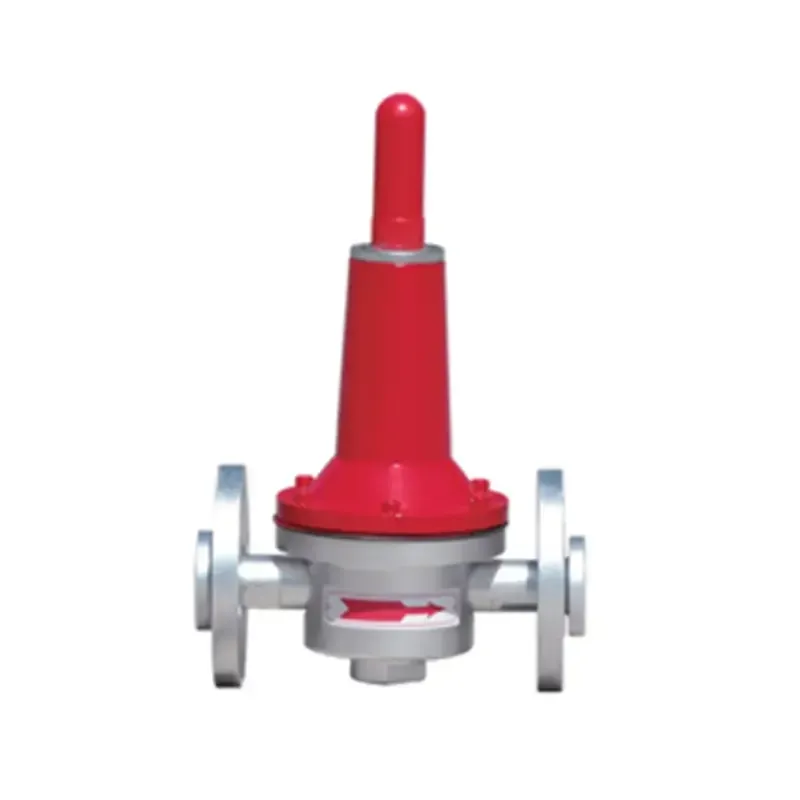
Dec . 14, 2024 10:05
Back to list
Safety Valve for Gas Pressure Relief Systems to Prevent Hazards
The Importance of Gas Safety with Pressure Relief Valves
In the context of modern energy consumption, gas plays a pivotal role in both residential and industrial sectors. However, the potential risks associated with gas usage, including leaks and explosions, highlight the critical need for stringent safety measures. One of the most vital components in ensuring gas safety is the pressure relief valve (PRV). This article explores the function, significance, and operational principles of gas safety relief valves.
Understanding Pressure Relief Valves
A pressure relief valve is a safety device designed to control or limit the pressure in a system. It automatically releases gas when a preset pressure threshold is exceeded. The primary purpose of this equipment is to prevent potential hazards such as explosions or system failures resulting from overpressure conditions. Gas pressure relief valves are critical in gas storage systems, pipelines, and even household appliances that use natural gas.
How Pressure Relief Valves Work
The operational mechanics of a PRV are relatively straightforward. The valve is set to open at a predetermined pressure level. When the pressure within the gas system rises beyond this level due to various factors—such as thermal expansion, surges in supply, or equipment malfunction—the valve opens automatically. By releasing gas into the atmosphere or directing it to a safe location, the PRV helps mitigate the risk of catastrophic failures.
The closed design of a pressure relief valve allows it to maintain the desired pressure within a system under normal operating conditions. However, once the pressure threshold is breached, the valve's spring mechanism allows it to open and vent excess gas. After the pressure is normalized, the valve closes, restoring the system to its safe operating condition.
.
Despite their robustness, pressure relief valves are not infallible. Regular maintenance and testing are imperative to ensure their functionality. Factors such as corrosion, sediment build-up, and mechanical fatigue can compromise a valve's performance over time. Industries reliant on gas operations must adhere to rigorous inspection schedules to verify that these safety devices are operating correctly.
صمام تنفيس أمان الغاز

In a domestic setting, homeowners using natural gas appliances should also be aware of the importance of regular appliance checks. Professional inspections not only ensure the safety of pressure relief valves but also identify potential gas leaks and other hazards. This proactive approach enhances the overall safety of gas usage in homes and reduces the likelihood of dangerous incidents.
Regulatory Standards and Compliance
In many countries, the installation and maintenance of pressure relief valves are governed by stringent regulatory standards. Authorities stipulate that systems handling gas must include safety measures such as PRVs to minimize risks. Compliance with these regulations is not just a legal obligation but a moral imperative aimed at protecting lives and property.
Manufacturers of PRVs must adhere to quality standards to ensure their products can withstand rigorous conditions. The choice of materials, design specifications, and testing methods are all factors that contribute to the reliability and effectiveness of a pressure relief valve.
The Role of Technology in Enhancing Safety
Advancements in technology have also played a crucial role in improving gas safety. Modern pressure relief valves can now come equipped with monitoring systems that provide real-time data on pressure levels. These smart systems can alert operators of potential issues before they escalate, allowing for timely interventions. Additionally, digital systems can log operational data, providing insights into maintenance needs and performance history.
Conclusion
Gas safety is a paramount concern in today's energy-dependent world. Pressure relief valves serve as essential components in ensuring that gas systems operate safely, efficiently, and within specified pressure limits. By understanding how these valves work, emphasizing regular maintenance, adhering to regulatory standards, and embracing technological innovations, industries and households can significantly reduce the risks associated with gas usage. In doing so, they not only protect their assets but also ensure the safety of lives and the environment. The commitment to gas safety, underscored by the importance of pressure relief valves, is vital for sustainable energy practices in the modern age.
Latest news
-
Safety Valve Spring-Loaded Design Overpressure ProtectionNewsJul.25,2025
-
Precision Voltage Regulator AC5 Accuracy Grade PerformanceNewsJul.25,2025
-
Natural Gas Pressure Regulating Skid Industrial Pipeline ApplicationsNewsJul.25,2025
-
Natural Gas Filter Stainless Steel Mesh Element DesignNewsJul.25,2025
-
Gas Pressure Regulator Valve Direct-Acting Spring-Loaded DesignNewsJul.25,2025
-
Decompression Equipment Multi-Stage Heat Exchange System DesignNewsJul.25,2025

